Stuff:
• 4-5 Straws (depending on size of the cube),
• 8-10 pipe cleaners/ chenille sticks (depending on size of the cube),
• Liquid dish soap Glycerine, Scissors ,
• A large bowl of water (big enough to immerse the cube)
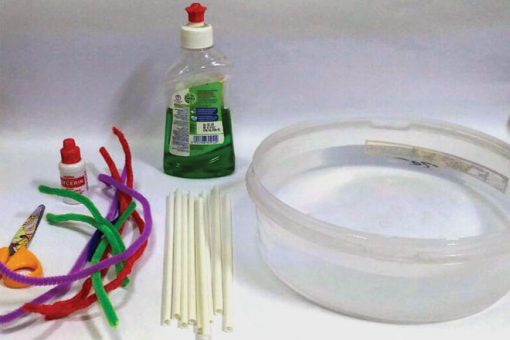
Do:
1. Take a bowl of water and add 2 tablespoons of liquid dish soap to make a bubble solution. Stir gently. Add 1 tablespoon of glycerine to make bubbles last longer.
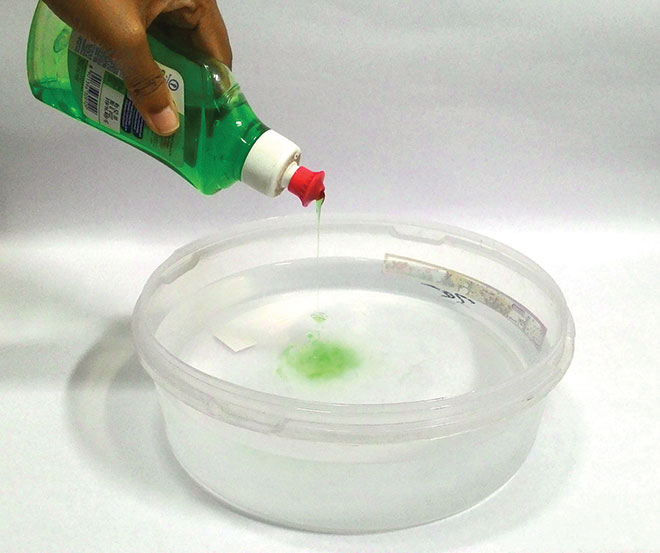
2. Cut a pipe cleaner about 5 inches in length and bend it in half.
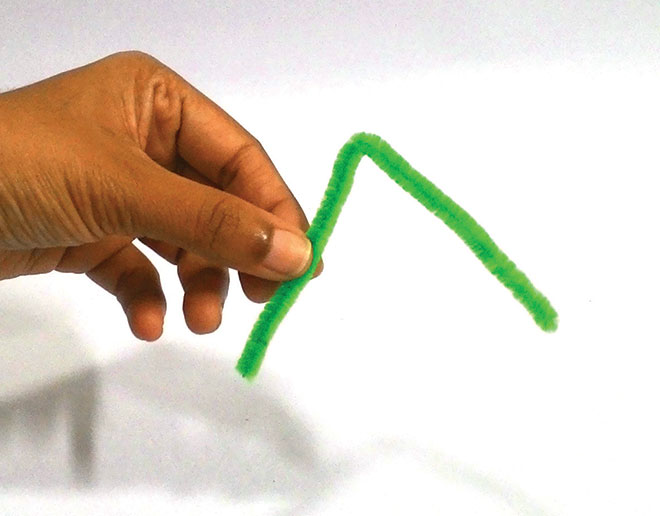
3. Take a third piece of pipe cleaner about 3 inches in length and fix it to the bent piece to form a pyramid shape as shown. Make three more such pieces.
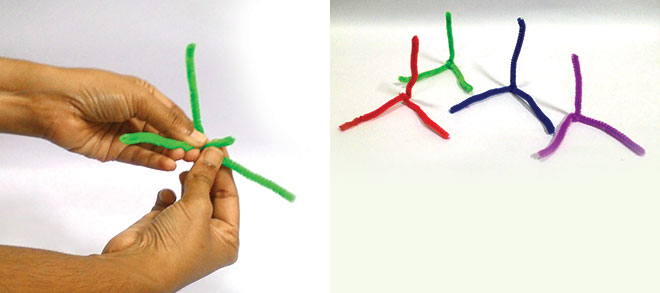
4. Take a piece of straw and cut it into small pieces. Each piece should be smaller than the length of the pyramid’s legs. You will need 12 such pieces of straw.
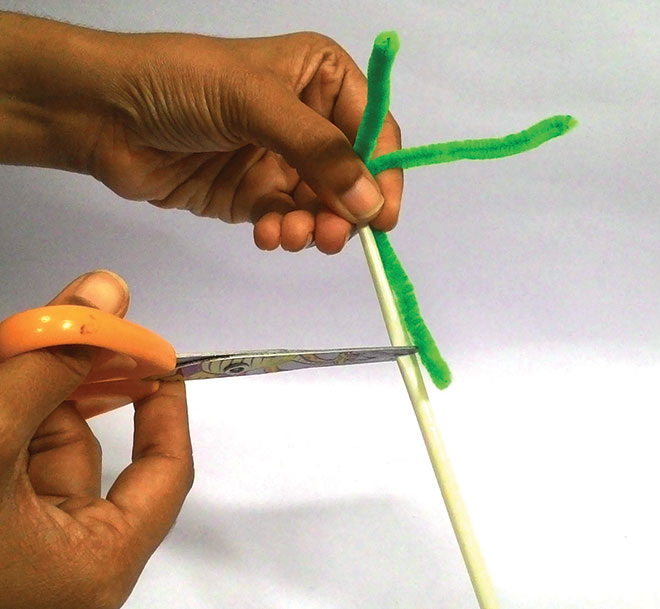
5. Put the straws around the pipe cleaners in all the 4 pyramids. The legs of the pyramid should extend beyond the straw.
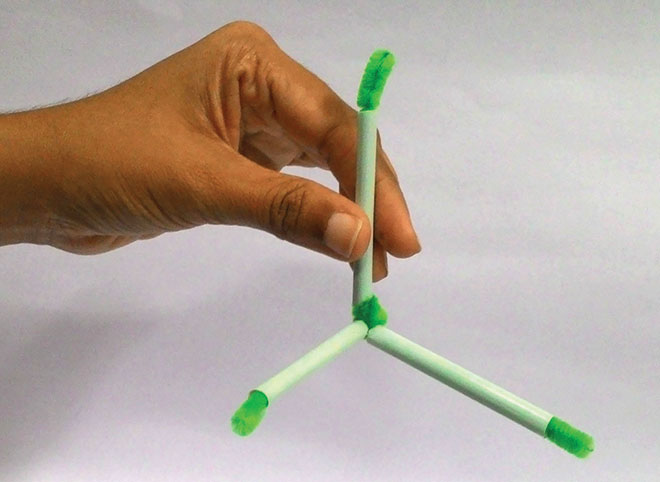
6. Join two of the pyramid-shaped pieces as shown by twisting their ends together to form a table-like structure. Join the remaining two pieces to it. You now have a cube.
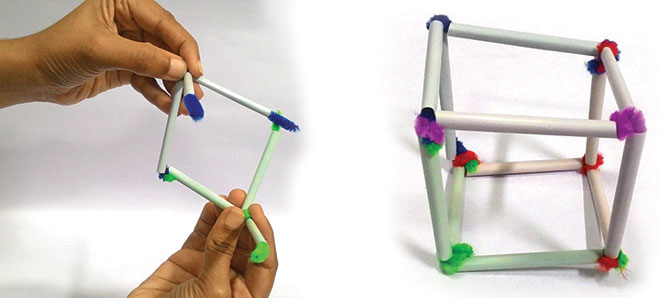
7. Immerse the cube into the bubble solution. When you take it out, you will see flat bubble surfaces have formed on the sides of the cube.
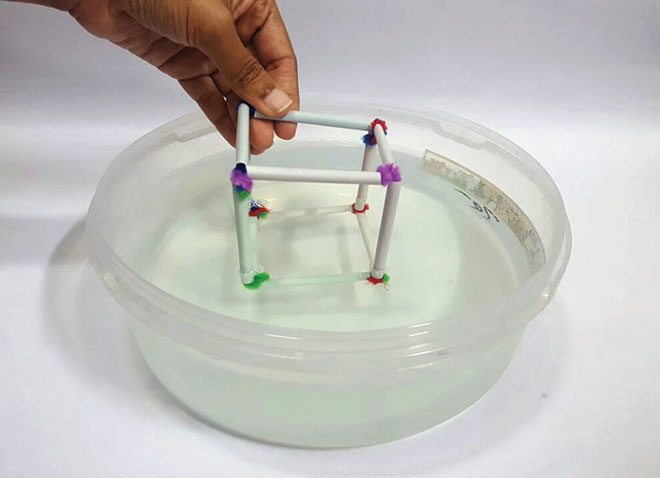
8. Now take a straw, dip it into the bubble solution and gently blow a bubble into the centre of the cube.
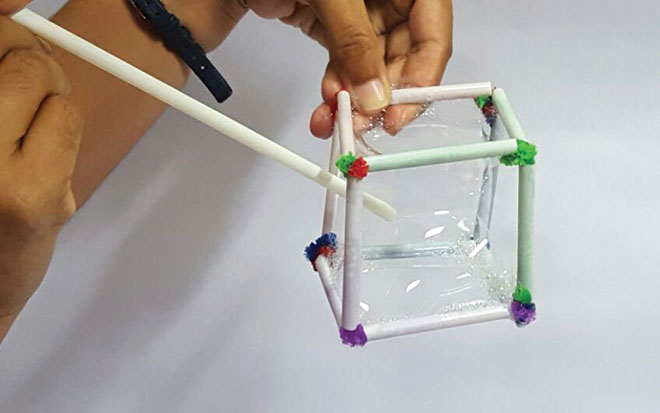
See: You will see that a cube-shaped bubble starts forming in the centre. You can increase its size by blowing more air into it.
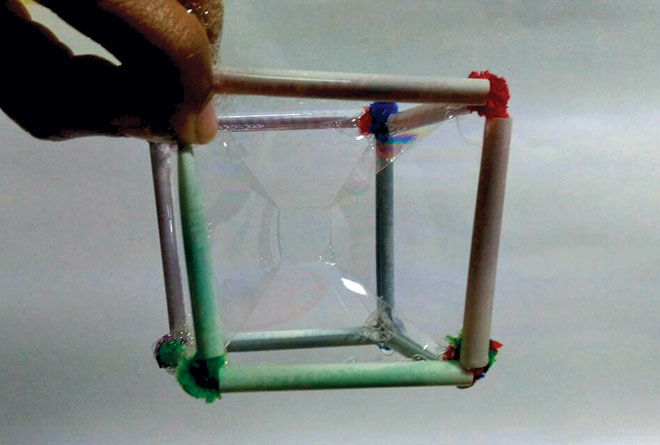
Think about:
How is the cube-shaped bubble formed?
Bubbles are usually round. A sphere has the smallest surface area, so the walls of the bubbles are thick. Hence, it is the most stable shape for them to be in. When a bubble is surrounded by other bubbles like the flat bubble surfaces of the cube in this case, it sticks to them and forms other stable shapes with corners and sides. Thus, the smaller cube bubble is formed inside.
Let’s find out:
In this experiment, we create bubbles for fun, but blowing bubbles in different shapes is important for the glass industry. Similar to how the shape of a bubble can be changed by blowing into it, glass when molten acts like a bubble. When solid glass is subjected to heat, it becomes molten and flexible. Then glass objects of different shapes can be made by blowing air into this molten glass and shaping it using other surfaces. After it is shaped, the molten glass is cooled to make it hard again.



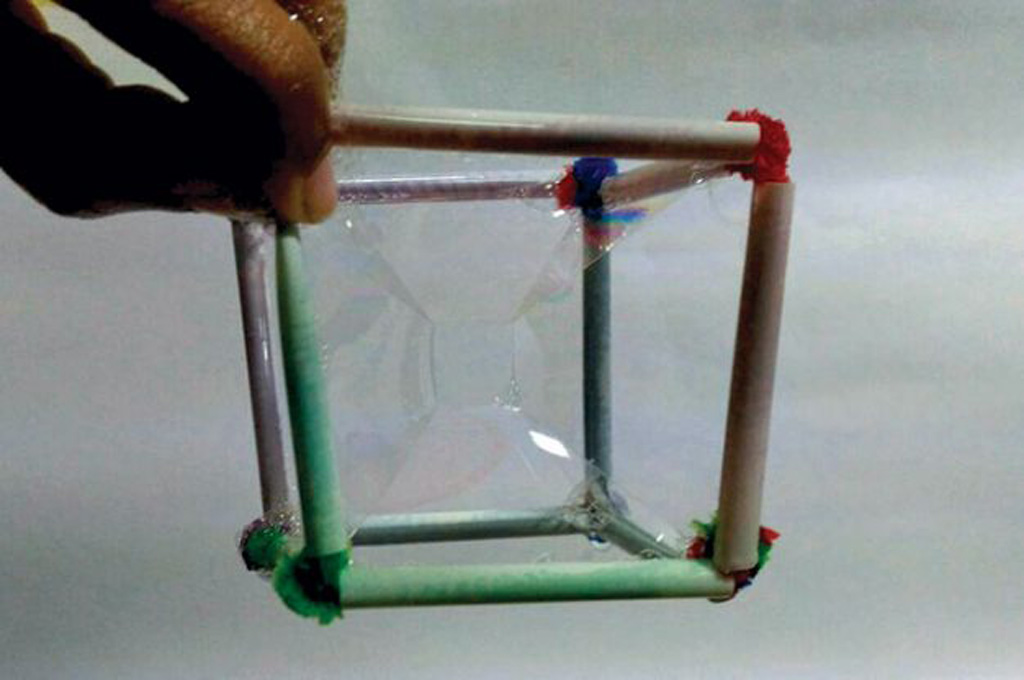




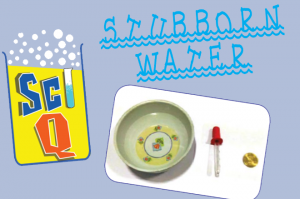
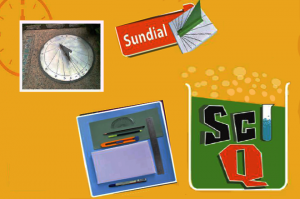
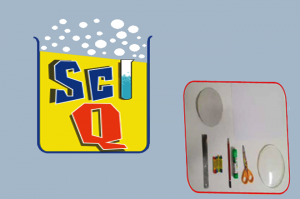

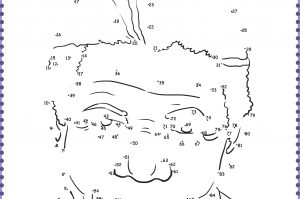

COMMENT